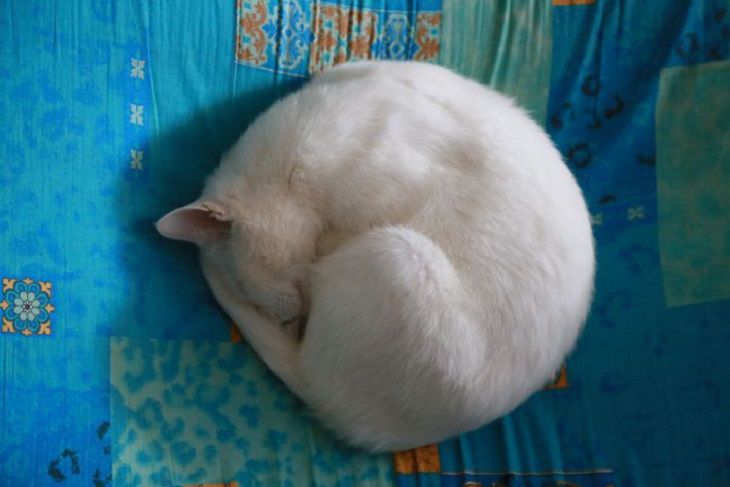Why does a cat cover its eyes with its paw when it sleeps: an explanation of the behavior
When a cat sleeps with its eyes covered by its paw, it is demonstrating an ancient instinct that developed in the wild.
In the wild, cats are always in a state of heightened alertness, even when resting.
By hiding their eyes with their paw, they protect themselves from possible threats. This method allows them to remain safe without losing the ability to quickly react to changes in their surroundings.
Modern domestic cats have inherited these instincts, and similar behavior remains relevant for them as well.
Comfort and coziness
Cats strive to create comfortable conditions for sleep. By covering their muzzle with their paw, they provide themselves with additional warmth and comfort.

This is especially important during cooler times of the year or when the room temperature is low.
This position helps the animal feel protected and relaxed, which promotes quality rest.
Feeling comfortable and safe plays an important role in the lives of cats, and this behavior is part of their desire for comfort.
Protection from light
Light can interfere with a cat's ability to sleep properly, especially bright daylight or artificial light.
The paw covering the eyes creates a darkening effect, helping the cat to relax better and fall asleep.
In nature, cats prefer to sleep in dark, secluded places, and at home they compensate for the lack of darkness in this way.
Light protection is important for maintaining healthy sleep patterns in indoor cats.
Expression of trust
A relaxed posture during sleep, when a cat covers its eyes with its paw, indicates its trust in the owner and the environment.
This behavior shows that the animal feels safe and does not expect a threat.
This is an indicator of a high level of comfort and trust in the owner and living conditions.
Cats that are stressed or anxious rarely adopt these poses, so it is important to create a calm and safe environment for your pet.
Personal hygiene
Cats are known for their cleanliness and attention to hygiene. Covering their eyes with their paw can serve as protection from dust and small particles.
This is especially true for long-haired breeds, where hair can get into the eyes and cause discomfort.
The paw helps prevent contamination of the eyes, which helps maintain the health and well-being of the cat.
Physiological features
Physiological characteristics of cats also play a role in this behavior.
High sensitivity of the paws and numerous nerve endings allow the cat to feel the slightest changes in the environment.
By covering its eyes with its paw, the animal creates additional tactile contact, which contributes to a feeling of security and comfort.
These physiological needs influence the behavior of cats, forming their behavioral stereotypes.
Behavioral features
Every cat has its own unique habits and preferences. Covering their eyes with their paw while sleeping may be one of these individual characteristics.
When observing their pets, owners often notice recurring behavior patterns associated with the animal's personal preferences and character.
Such behavior can be passed from parents to offspring, becoming part of heritable behavioral traits.
Previously, we talked about how to determine a cat’s age at home.
